Interview
Interview: Iris Van Zanten
In conversation with artist Iris Van Zanten. Originally from Amsterdam, Iris now lives in Haarlem in the Netherlands.
Can you talk about your journey into or interest the arts?
When I was a little child, I was always creating things: knitting, drawing and crocheting. I was raised up with all sorts of art, culture and grew up in a special part of Amsterdam, a huge allotment where schoolkids were taught about nature. My parents took me to a lot of museums and concerts. When I was a teenager, my dream was to become a police sketch artist. When I found out it was a totally digital business, my aspirations moved to the field of the education in Arts. In this way, the struggle to capture the essence of a face in a portrait, like a police sketch artist has to capture this in its portraits of suspects, is still visible in my portraits nowadays.
After High School I went to the Amsterdam University of the Arts and learned more about graphic techniques and Art History. My final exam collection was all about the Virgin Mary, a quest looking for new images for such an universal theme. A few years later the Virgin Mary was again present in my thesis of the University about the robe of Mary in the Dutch history of Art.
Do you use a sketchbook? I’m interested in what a sketchbook means to you and your work?, or how people develop their ideas.
An interesting question, because the process of making art has become an unconsciously automatic process. To analyse my way of using a sketchbook, I’ve come to the conclusion I used it only for details in my work. For exploring a position of a hand, food or head, trying out different expressions of the face or looking for the best composition. However, I also use photographs for this purpose. The main thing for me to use sketchbooks is for trying out colours and to design patterns which I use in the paintings.
There is an innocence to your work. Can you talk about the themes you are exploring and the influences upon your work?
I’m interested in Romanesque art, especially the naïvety in depicting faces, linear perspective and decorative patterns. The quite humorous images from the Romanesque art caught my interest in the University and I use it often in my paintings. It is a quest for finding the essence; looking for the most effective expressions, gestures and attributes to depict a story. In a way, it is a challenge using universal themes from the Bible or mythology, because they are depicted in so many ways in art history. I love to find a new image within the theme.
Every week I join a club of artist in a figure drawing session, a great opportunity to practice the gestures and expressions of the human body. Sometimes I use the sketches of these sessions in my artwork. As seen in my portraits, the human being, in all its unusual habits are also a basic theme in my work. For instance, my painting: I’m the King of the World is all about the human urge for rule the earth, water and sky.
Can you talk about your process of working? How do you work, how often, is there a particular pattern?
I combine my work as an artist with teaching, so I have to make sure I use the time very effectively. Every Sunday morning I join a club of artists in a session drawing from life. This is a very important part to practice these skills of gesture drawing. Sometimes I use these drawings in my paintings. In a way, this is my sketchbook. The materials I use in the paintings are pure pigments, ink and metal-leaf, as gold, copper and silver leaf. To give the pigments a certain hold, I prepare the surfaces with sand, bone glue and Van Dyck brown. In the next step I draw the first basic lines with ink, and for sure, this is never how the painting ends up. In the process of making, the paintings always change. The most important step is to keep a physical distant of the painting and look at it day by day. If it keeps its strength, I finish the painting to its final shape. If I’m bored after a few days, I recreate it till it becomes powerful.
In this case, I work on two or three paintings at the same time.
Do you find the process of creating work relaxing or therapeutic? I’ve become increasingly interested in the relationship of the sketchbook and the work to the artist.
Yes absolutely, especially the process of creating art. It doesn’t matter if I’m struggling with a line, colour of shape. I start all over again sometimes turning the painting upside down. Sometimes the painting is done in a flash, mostly a painting is a matter of time and it even happens that a painting never finds its final shape. I love the concentration I need when I create, it gives me a certain focus and energy.

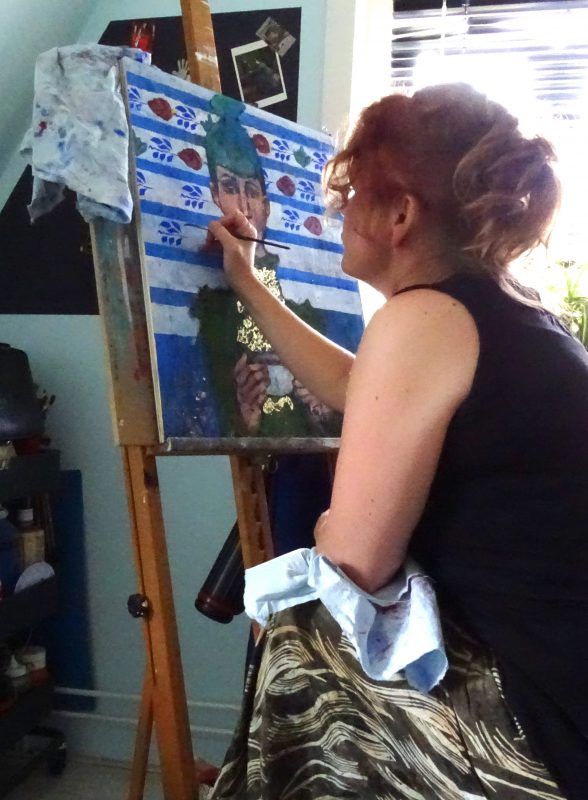
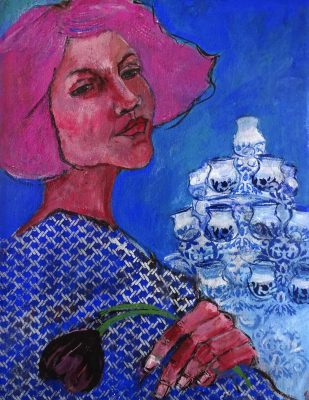
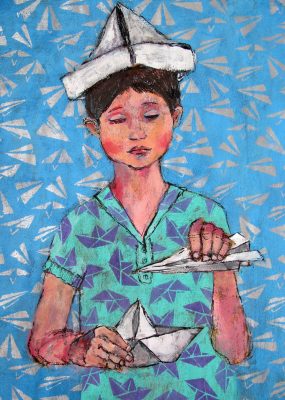
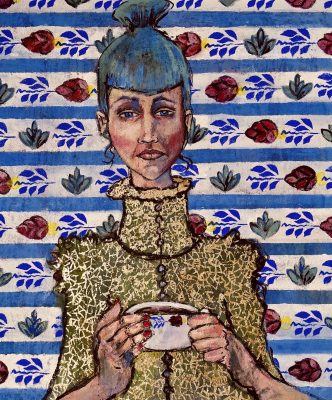
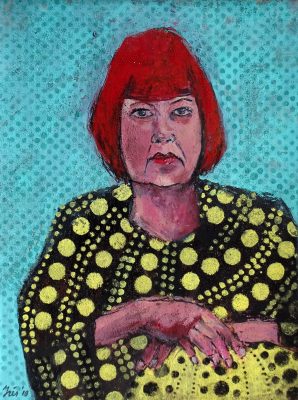
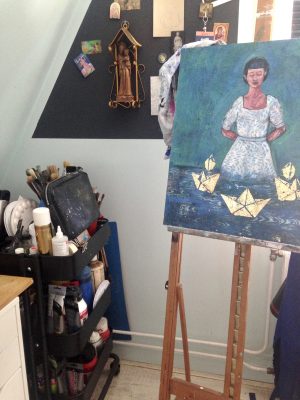
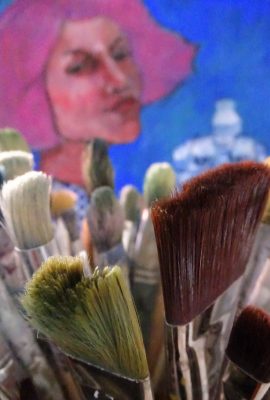
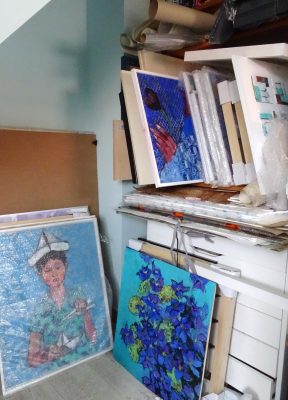
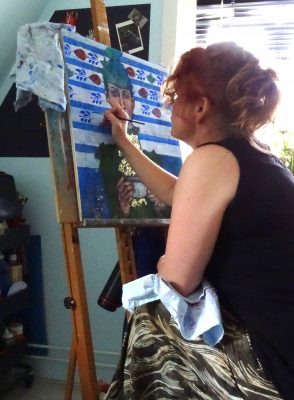
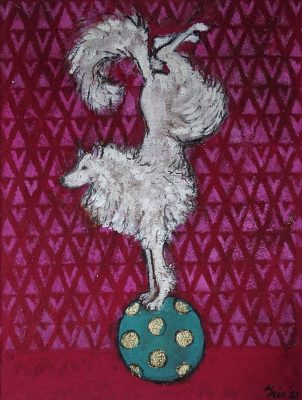
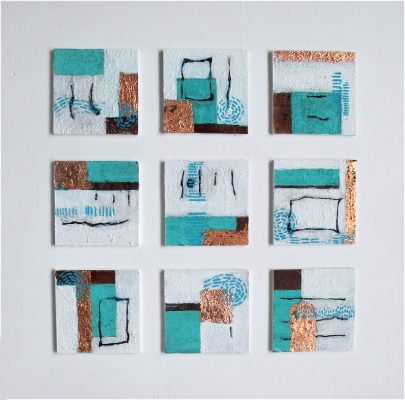
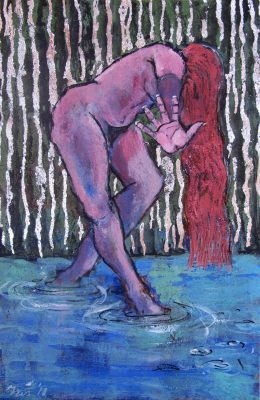
Do you like this artist?
If so, why not write a comment or share it to your social media. Thanks in advance if you can help in this way.